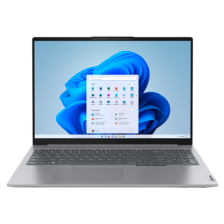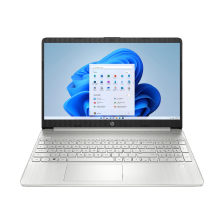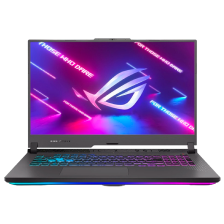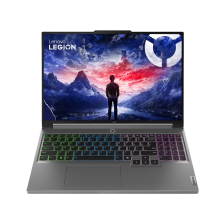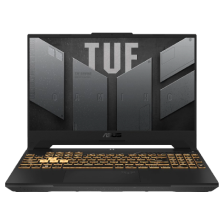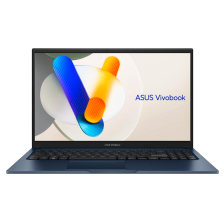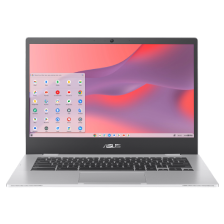Laptop Buying Guide
Top rated laptops for every day.
Page 1 of 7
HP 17.3" FHD Laptop, Intel Core i3-N305, 8GB RAM, 512GB SSD, +9.5 hours battery, Windows 11 Home
Price is $279.99, Regular price was $579.99, You save 51%
$579.99
1
1
2
3
4
5
6
7
8
9
10
11
12
13
14
15
16
17
18
19
20
21
22
23
24
25
26
27
28
29
30
Over 30
HP 15.6" LED Laptop, Intel Core i3-N305, 8GB RAM, 256GB SSD,+ 7 hours battery, Windows 11 (B42YPUA#ABA)
Price is $218.99, Regular price was $529.99, You save 58%
$529.99
1
1
2
3
4
5
6
7
8
9
10
11
12
13
14
15
16
17
18
19
20
21
22
23
24
25
26
27
28
29
30
Over 30
Lenovo IdeaPad 5i 2-in-1 16" LCD Touchscreen Laptop, Intel Core Ultra 5 225U, 16GB RAM, 512GB SSD, Windows 11, Luna Grey
Price is $499.99, Regular price was $949.99, You save 47%
$949.99
1
1
2
3
4
5
6
7
8
9
10
11
12
13
14
15
16
17
18
19
20
21
22
23
24
25
26
27
28
29
30
Over 30

HP 15.6" FHD Touchscreen Laptop, Intel Core Ultra 5 125H, 24GB RAM, 512GB SSD, Windows 11 Home is New at Staples
Price is $449.99, Regular price was $829.99, You save 45%
$829.99
1
1
2
3
4
5
6
7
8
9
10
11
12
13
14
15
16
17
18
19
20
21
22
23
24
25
26
27
28
29
30
Over 30
Lenovo Legion 5i 15.6" FHD OLED Gaming Laptop, Nvidia GeForce RTX 5050, Intel Core i7-14700HX, 16GB RAM, 512GB SSD, Windows 11
Price is $899.99, Regular price was $1,349.99, You save 33%
$1,349.99
1
1
2
3
4
5
6
7
8
9
10
11
12
13
14
15
16
17
18
19
20
21
22
23
24
25
26
27
28
29
30
Over 30
Lenovo IdeaPad Slim 5i 16" LCD Laptop, Intel Core 5, 2.2 Ghz, 16GB RAM, 512GB SSD, Windows 11, Luna Grey (83J1002JUS)
Price is $449.99, Regular price was $779.99, You save 42%
$779.99
1
1
2
3
4
5
6
7
8
9
10
11
12
13
14
15
16
17
18
19
20
21
22
23
24
25
26
27
28
29
30
Over 30

HP OmniBook 7 Flip 16" 2K 2-in-1, Copilot+ PC, Intel Core Ultra 7, 32GB RAM, 1TB SSD, +23 hours battery, Windows 11 Home is New at Staples
Price is $799.99, Regular price was $1,299.99, You save 38%
$1,299.99
1
1
2
3
4
5
6
7
8
9
10
11
12
13
14
15
16
17
18
19
20
21
22
23
24
25
26
27
28
29
30
Over 30
HP 15.6" FHD Laptop, Intel Core i7-1355U, 16GB RAM, 512GB SSD, Backlit Keyboard, +9.75 hours battery, Windows 11
Price is $599.99, Regular price was $859.99, You save 30%
$859.99
1
1
2
3
4
5
6
7
8
9
10
11
12
13
14
15
16
17
18
19
20
21
22
23
24
25
26
27
28
29
30
Over 30
Lenovo ThinkPad E16 G2 16" AI Laptop, Intel Core Ultra 5-125U, 16GB RAM, 1TB SSD, Windows 11 Pro (21MAS0BV00)
Price is $699.99, Regular price was $1,099.99, You save 36%
$1,099.99
1
1
2
3
4
5
6
7
8
9
10
11
12
13
14
15
16
17
18
19
20
21
22
23
24
25
26
27
28
29
30
Over 30
Lenovo V15 G4 ABP 15.6" Laptop, AMD Ryzen 7-7730U, 16GB RAM, 512GB SSD, Windows 11 Pro (82YY001NUS)
Price is $499.99, Regular price was $999.99, You save 50%
$999.99
1
1
2
3
4
5
6
7
8
9
10
11
12
13
14
15
16
17
18
19
20
21
22
23
24
25
26
27
28
29
30
Over 30

Lenovo V15 G4 15.6" Laptop, Intel Core i7-13620H, 16GB RAM, 512GB SSD, Windows 11 Home (83CC002EUS) is In-store only
Price is $449.99, Regular price was $879.99, You save 48%
$879.99
ASUS Vivobook S 16 2.8K OLED AI Laptop, Intel Core Ultra 9 285H, 16GB RAM, 1TB SSD, Backlit Keyboard, Windows 11 Home
Price is $799.99, Regular price was $1,149.99, You save 30%
$1,149.99
1
1
2
3
4
5
6
7
8
9
10
11
12
13
14
15
16
17
18
19
20
21
22
23
24
25
26
27
28
29
30
Over 30
Lenovo Slim 7i Aura Edition 14” WUXGA OLED Laptop, Copilot+ PC, Intel Core Ultra 7 256V EVO, 16GB RAM, 1TB SSD, Windows 11 Home
Price is $799.99, Regular price was $1,099.99, You save 27%
$1,099.99
1
1
2
3
4
5
6
7
8
9
10
11
12
13
14
15
16
17
18
19
20
21
22
23
24
25
26
27
28
29
30
Over 30
Lenovo V15 G4 IRU 15.6" Laptop, Intel Core i3-1315U, 16GB RAM, 512GB SSD, Windows 11 Home (83A100PBUS)
Price is $349.99, Regular price was $599.99, You save 41%
$599.99
1
1
2
3
4
5
6
7
8
9
10
11
12
13
14
15
16
17
18
19
20
21
22
23
24
25
26
27
28
29
30
Over 30
Lenovo IdeaPad 5x 14" 2-in-1 OLED Touchscreen Laptop, Copilot+ PC, Snapdragon X Plus, 16GB RAM, 1TB SSD, Win 11 Home
Price is $579.99, Regular price was $929.99, You save 37%
$929.99
1
1
2
3
4
5
6
7
8
9
10
11
12
13
14
15
16
17
18
19
20
21
22
23
24
25
26
27
28
29
30
Over 30

HP 15.6" Touchscreen Laptop, AMD Ryzen 3 7320U, 8GB RAM, 256GB SSD, Windows 11 Home (B8QH9UA) is New at Staples
Price is $309.99, Regular price was $499.99, You save 38%
$499.99
1
1
2
3
4
5
6
7
8
9
10
11
12
13
14
15
16
17
18
19
20
21
22
23
24
25
26
27
28
29
30
Over 30
Lenovo V15 G4 15.6" Laptop, AMD Ryzen 7 7730U, 16GB RAM, 512GB SSD, Windows 11 Home (82YY003DUS)
Price is $449.99, Regular price was $879.99, You save 48%
$879.99
1
1
2
3
4
5
6
7
8
9
10
11
12
13
14
15
16
17
18
19
20
21
22
23
24
25
26
27
28
29
30
Over 30
ASUS ROG Strix G16 16" FHD+ 165Hz Gaming Laptop, NVIDIA GeForce RTX 5070, Intel Core i9 14900HX, 32GB RAM, 1TB SSD, Windows 11
Price is $1,499.99, Regular price was $1,999.99, You save 25%
$1,999.99
1
1
2
3
4
5
6
7
8
9
10
11
12
13
14
15
16
17
18
19
20
21
22
23
24
25
26
27
28
29
30
Over 30
ASUS Vivobook 15 FHD 15.6" Laptop, Intel Core i3-1315U, 8GB RAM, 512GB SSD, Windows 11 (F1504VA-SB31)
Price is $279.99, Regular price was $469.99, You save 40%
$469.99
1
1
2
3
4
5
6
7
8
9
10
11
12
13
14
15
16
17
18
19
20
21
22
23
24
25
26
27
28
29
30
Over 30

Lenovo IdeaPad 1i 14" Laptop, Intel Celeron N4500, 4GB RAM, 128GB eMMC, Windows 11 Home S Mode (82LV0075US) is New at Staples
Price is $179.99, Regular price was $349.99, You save 48%
$349.99
1
1
2
3
4
5
6
7
8
9
10
11
12
13
14
15
16
17
18
19
20
21
22
23
24
25
26
27
28
29
30
Over 30
Lenovo IdeaPad 5 14” WUXGA IPS 2-in-1 Laptop, Copilot+ PC, AMD Ryzen AI 5 340, 16GB RAM, 256GB SSD, Windows 11 Home, Luna Grey
Price is $549.99, Regular price was $879.99, You save 37%
$879.99
1
1
2
3
4
5
6
7
8
9
10
11
12
13
14
15
16
17
18
19
20
21
22
23
24
25
26
27
28
29
30
Over 30
Processor
Think of the Processor (CPU) as the brain of the computer, it follows instructions to do all tasks your computer needs. And the speed that it completes these tasks are represented in their series number. For example, Intel processors typically range from 3 to 9, with 3 being the entry point and 9 being the peak performance option.
Memory (RAM)
RAM, or Random Access Memory, is a type of computer memory that provides temporary storage for data and programs actively in use. The CPU(processor) can quickly access and retrieve this data, enhancing your computers performance. Think of it like a painters palette, holding only the needed paints, or data in this case, that you need for what you're currently working on.
Storage (SSD)
Laptops storage is important for several reasons. All your data, applications, files, images and even your operating system need to fit in this space, so you'll want to make sure you pick the size that fits your needs. Imagine its the library or archive of your computer, everything you've used or saved lives there. Also, keep in mind there are different types of Storage. SSD's are the modern standard, with faster loading times, improved system responsiveness and a lighter weight at a slightly more premium price.
Screen Size
Laptop screen size directly impacts your viewing experience, while it may not contribute to the laptops performance, it does play a large role in overall usability. Larger screens provide more real estate for multi tasking and content readibility, while smaller screens tend to be more portable and lightweight, a bit easier on the go.
OS System
The Operating System is the primary software component that allows your computer to function. It provides the onscreen user interface while also managing all internal resources and facilitating interactions between all software and hardware components. Simply, without an OS, your laptop just wouldn't work at all.
Battery Life
Battery Life directly affects the portability and extended usability of your laptop. A longer battery life allows you to use your laptop without being tethered to a power source.
Graphics Card
A Graphics Card, or GPU, is important because it makes your computer handle visuals better, its like the visual powerhouse of the computer. Its a specialized component that helps with gaming, video editing and graphic design, smoothing out the images and making sure you see all the details you need.
Elevate your gaming experience.
Consider Graphics Card, Screen Refresh Rate, and Screen Resolution for optimal gaming.
Let's dig in.
Let's dig in.
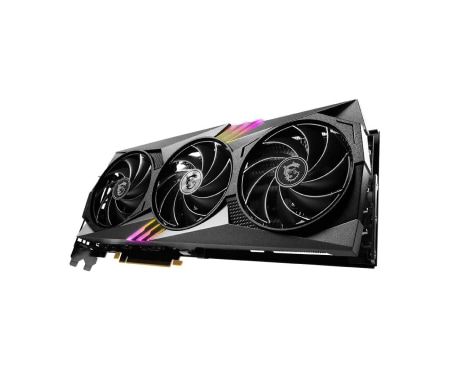
Graphics Card (GPU)
- The most essential component of your gaming setup, a graphics card determines the gaming capabilities and experiences you'll have.
- The newest generation of NVIDIA GeForce RTX or AMD Radeon RX cards are the best place to start, then make sure they meet the requirements of the games you enjoy.
- It's important to consider how many frames per second the graphics card you choose is capable of outputting. A higher frame rate means smoother and more responsive gameplay.
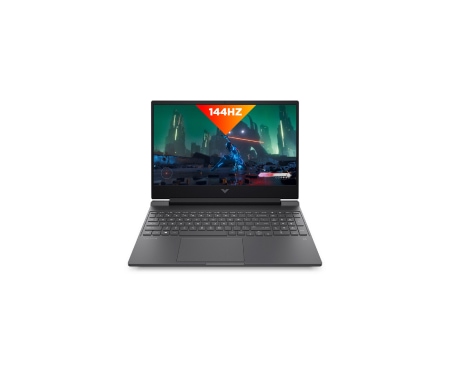
Refresh Rate
- Refresh Rate, measured in Hertz, refers to how many times per second the screen updates, or refreshes the image.
- Common refresh rates are 60Hz, 100Hz, 144Hz, and 240Hz. 60Hz is standard for casual gaming, and 144Hz+ for more serious gamers.
- Consider how many frames your computer is capable of so you pick a screen to match and reduce motion blur.
- Response Time is the amount of milliseconds it takes for a pixel on the screen to transition colors. For gaming, less than 5 ms is recommended.
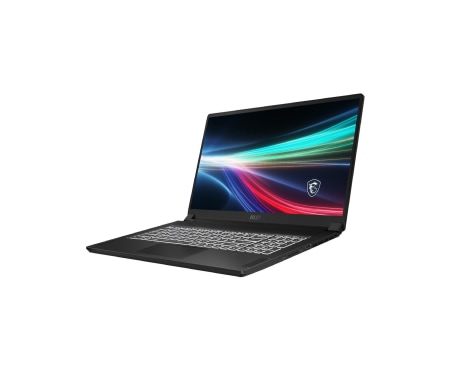
Screen Resolution
- Whether it's the clarity of FHD, the heightened details of QHD, or the breathtaking precision of 4K, each option promises an extraordinary viewing experience.
- Full HD: The starting point for a quality gaming experience, measured as 1920 pixels horizontally by 1080 pixels vertically.
- Quad HD: Elevate your viewing with four times the resolution of FHD, these screens measure 2560x1440 or 1440p.
- 4K: Immerse yourself with four times the pixels of QHD. These top-tier screens measure at 3840x2160.
Top Gaming Laptops
Best Selling Computer Accessories
Additional Services

Staples Accident Protection & Tech Plan
- From repair to replacement, we've got you covered with no additional fees or deductibles. We'll keep you up and running!
- Covers drops, spills, and cracked screens on tablets and laptops (ADH).
- Easy online claims, available 24/7.
- No deductibles. No additional fees. Covers parts and labor.

